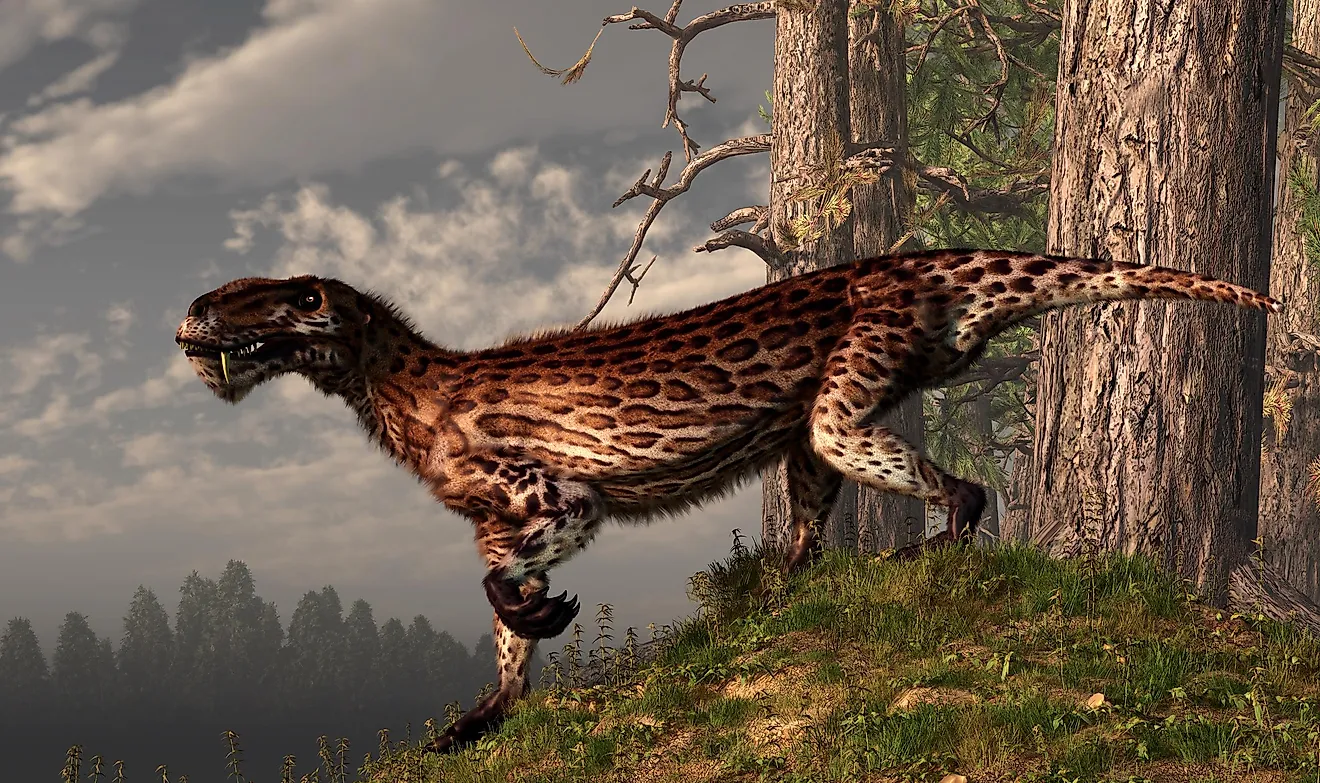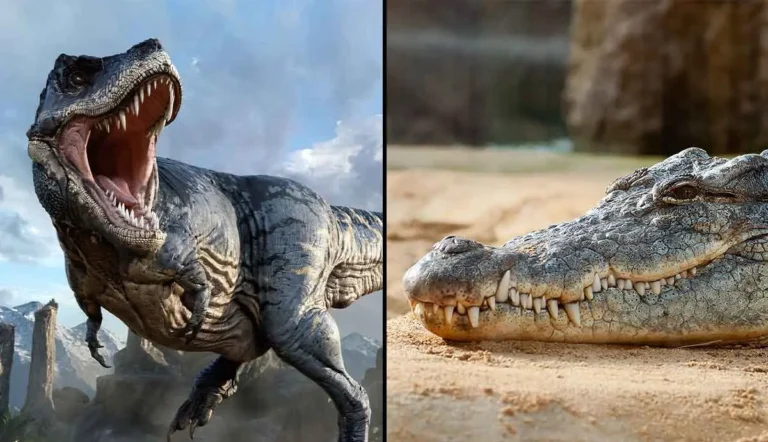It was during this collision of the asteroid millions of years ago that it led to the extinction of dinosaurs and changed life drastically. However, as the dinosaurs became extinct, numerous species cohabiting with them remain in existence. Some of these ancient species allow historians to peek into these prehistoric ecosystems, which have proven evolutionary endurance and flexibility over millions of years.
Key Takeaways
Some species that are alive today have their lines traced to the age of dinosaurs. This includes crocodilians, tuatara and other egg-laying mammals.
These living fossils talk about a life on Earth during Mesozoic Era and suggest many survival strategies of evolution
The survival of these species during mass extinction events remains underlying a great influence of biodiversity and delicate balance in ecosystems
The Cretaceous-Tertiary Mass Extinction

It is amongst those most recognizable animals that vanished along with a huge asteroid impact in Earth. This catastrophic event is known as Cretaceous-Tertiary Mass Extinction, or the K-T event. Scientists estimate that it might have happened about 66 million years ago when an asteroid hit what is now the Yucatan Peninsula and triggered volcanic activity and disasters that caused the deaths of about 70% of all living things on Earth source: NASA Jet Propulsion Laboratory.
Though many dinosaurs and others went extinct, most forms of life survived this catastrophe. Curiously, some 84% of marine families and 82% of land vertebrate families survived the K-T source: Space.com. These survivors continued evolving over time, and some of them have living descendants today. Let’s look at some of the creatures that roamed, crawled, and swam alongside these dinosaurs and had survivors to the present day.
Land Animals That Walked with Dinosaurs

Egg-laying Mammals: Monotremes
The earliest mammals were egg-laying, small creatures called monotremes. While dinosaurs roamed the Earth, monotremes scavenged for survival. Today, there exist only three species of monotremes: the duck-billed platypus and two species of echidnas, or spiny anteaters. Now an exciting relic from the past, they represent a lineage that flourished during the Mesozoic.
Among the monotremes, especially, the platypus, many archaic features are retained which might better represent early mammalian evolution. They provide critical information about how mammals emerged during the age of dinosaurs source: PhysOrg.
Crocodilians: Living Fossils
The three types of crocodilians—their cousins are crocodiles, alligators, and caimans—have remained largely unchanged since the Triassic, more than 240 million years ago. Although they were much bigger during the Mesozoic, it is amazing that from the 23 species of crocodilians that exist today, all belong to ancient predators that roamed the earth as dinosaurs did. The history of life forms thriving in ancient ecosystems can thus be told through these reptiles.
This species of reptile has survived several mass extinction events and survived in so many different types of habitats, making crocodilians one of the most resilient species alive today. Thus, they give scientists a clue about how some species survive catastrophic events source: University of Bristol.
Tuatara: A Living Fossil
Currently, there is only one extant species in the order Sphenodontia, namely Sphenodon punctatus, which is the tuatara. This is one of the thriving groups in the Mesozoic Era. The tuataras are endemic to New Zealand and seem to have lived relatively unchanged over the last 200 million years. This ancient lineage is quite important in providing data for knowledge of reptilian evolution and their adaptation to changing environments.
Tuataras are such living fossils due to their many primitive features. Therefore, the species is very significant in understanding how the reptiles survived the post-K-T event, source: ScienceDaily.
Amphibians: Frogs, Salamanders, Caecilians
The first amphibians were much larger than modern species and date to a time long before the Mesozoic period. The coexistence of some of the larger species with dinosaurs contributed to our understanding of ancient amphibians and the different periods of existence throughout this group. While many ancient amphibians are extinct, several groups survived, including frogs and toads, newts and salamanders, and caecilians. Indeed, the ancestors of these creatures were among the first vertebrates that, responding to a slowly changing environment, developed adaptations for life on land. Thus, they were crucial in allowing us to understand how vertebrate evolution actually occurred.
Frogs and toads are extremely characteristic of evolutionary success, for they are still ubiquitous in their environments today. Salamanders and caecilians also belong to ancient lines that hold information about early vertebrate life source: World Book Encyclopedia.
Marine Animals That Swam with Dinosaurs

Echinoderms: Sea Stars and Sea Urchins
Echinoderms – to which the sea stars, urchins, and sea cucumbers belong – have been with us since the Mesozoic era or even before it. In fact, the majority of the species died out in the K-T event; however, some survived and live today. Echinoderms hold importance because it is a lineage that co-evolved with dinosaurs, hinting at past marine ecosystems around millions of years ago.
Today’s sea urchins bear an uncanny resemblance to their distant ancestors, where scientists can peek into the life within the oceans of the Mesozoic time source: University of California Museum of Paleontology.
Sharks: Ancient Predators
Long before ever dinosaurs set foot on this Earth, sharks were already the ocean’s best predators. These incredible creatures survived many extinction events, including the K-T event, and now still one of the most powerful predators in the world’s oceans.
Present-day sharks are evolutionary descendants of lines that originated more than 400 million years ago. Survival and thriving in sharks throughout countless challenges over millions of years of climatic changes source: Paleos.
Coelacanth: A True Living Fossil
One of the most famous “living fossils,” the coelacanth is a creature assumed to have survived in the seas at the time of the dinosaurs. Rediscovered in the 1930s, it caused shock waves across the scientific world. Coelacanths are lobe-finned fish, and they give valuable insights to vertebrates that have undergone a transition from water to land.
Coelacanths are the most astonishing example of evolutionary survival, representing a line that goes back 400 million years. Their discovery will help paleontologists understand how early vertebrates adjusted to environments and evolved into land animals source: PhysOrg.
Plants from the Mesozoic Era
While the animals were thriving during the Mesozoic, plants as well had a huge role in the past ancient ecosystems. Some of the plants, such as conifers and ferns, were also abundant during the Mesozoic and are still found today. One famous example is the Ginkgo biloba, which is a tree that has altered so little since the Mesozoic Era. This would give information about the flora that played a direct role in supporting life hundreds of millions of years ago.
Conclusion
While the effects of the asteroid were fatal to all dinosaurs, an enormous number of animals and plants survived. From crocodilians and monotremes to sharks and coelacanths, these ancient creatures offer a view into the past; by comprehending life that survived through Earth’s most dramatic extinction event.
Through continued study of these survivors we gain valuable insight into the complex interdependencies characteristic of ecosystems and we get a notion of how life’s resilience is in practice. Lessons that thus derived are not only important in understanding the past’s record of our planet but also in furthering biodiversity to protect for the present and future.
Sources and Further Reading
- NASA Jet Propulsion Laboratory: K-T Event
- Space.com: The Five Worst Extinctions in Earth’s History
- PhysOrg: Small Furry Animals Lived with Dinosaurs
- University of Bristol: Timing and Rate of the KT Extinction
- ScienceDaily: New Zealand’s ‘Living Dinosaur’
- University of California Museum of Paleontology: Mesozoic Era
- World Book Encyclopedia: Creatures That Lived with Dinosaurs
- Paleos: Mesozoic Era




1 Comment
Pingback: How did dinosaurs adapt to their environment? - Dino Guider